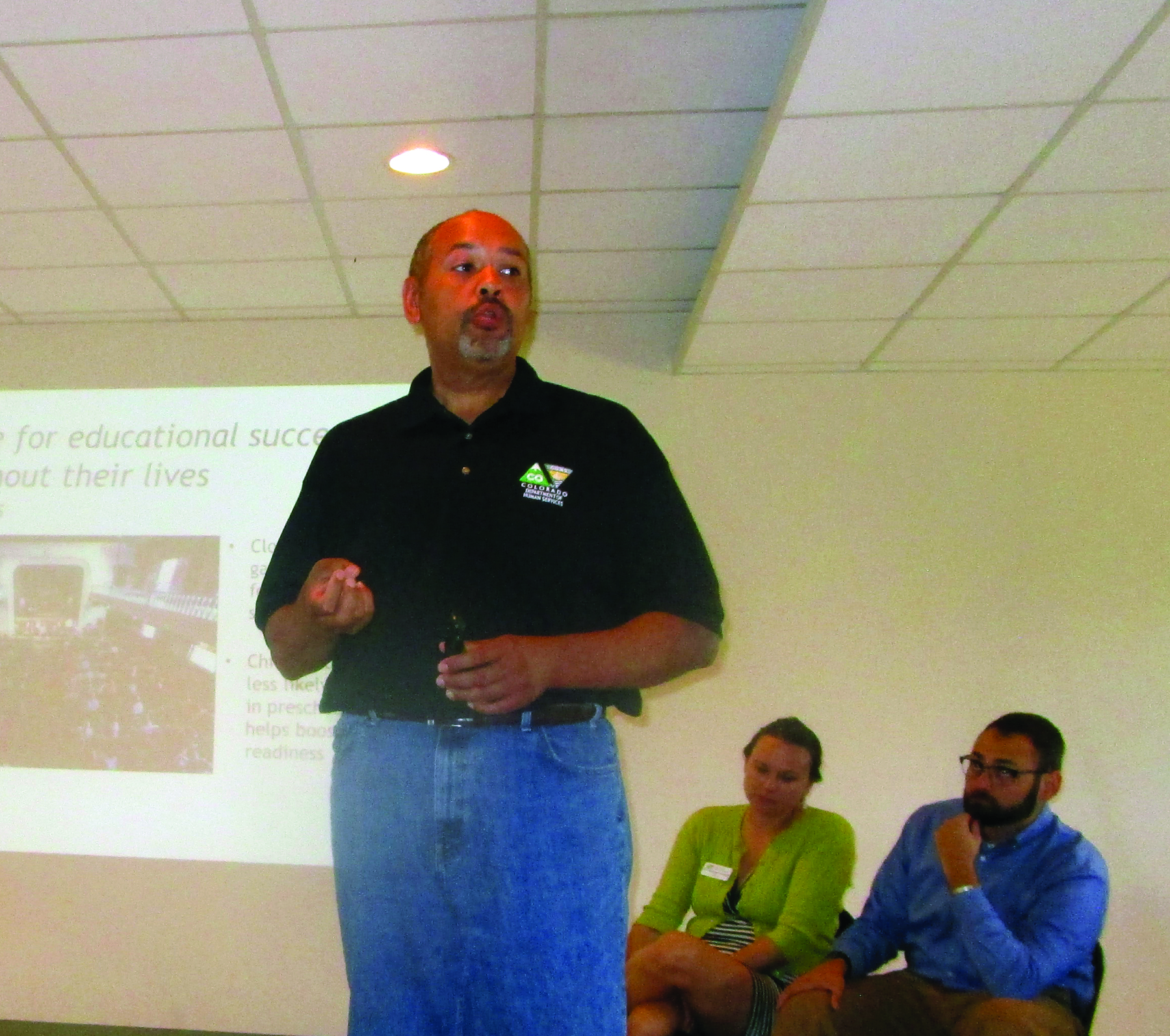Human services experts visit Valley

COSTILLA COUNTY — The executive management team of the Colorado Department of Human Services (CDHS) visited the Blanca/Fort Garland Community Center recently as part of its 2017 Summer Planning Tour.
The main goals of the tour are to identify overarching challenges and opportunities in all areas and to brainstorm ways that the state and local communities can collaborate to improve services to Coloradans.
Employees of departments of human services in all the Valley’s counties attended this annual event that gave CDHS leadership the opportunity to hear from partners and stakeholders about local challenges and innovative solutions.
Executive Director Reggie Bicha explained that it was the fourth visit so far by himself and his executive team to areas where they would present CDHS priorities for the upcoming year, review gains made in 2016-2017 and discuss challenges and opportunities moving forward.
CDHS consists of more than 7,500 county or state employees dedicated to providing human services to Colorado residents. It provides services through 63 county or district departments of social services, two state maternal health institutes, 10 youth corrections facilities, five nursing homes, 28 vocational rehabilitation offices, three regional centers for persons with developmental disabilities and numerous community-based public and private providers.
In addition, CDHS contracts with several agencies to provide human services, as well as administering and providing oversight for a variety of federally funded programs.
The department has five goals, or desired outcomes, for the individuals and families who receive services. They are: economic self-sufficiency; family and community connections; health and rehabilitation; independent living and safety.
Bicha said a very important priority is to help people thrive in the communities of their choice, achieve economic security through meaningful work and to achieve educational success.
One of CDHS’s major successes during the past fiscal year was working with legislators to end the practice of putting persons with mental health issues in jail.
A law was also added protecting vulnerable adults from abusive care providers, while a two-generational approach was established to support parents and their children in their homes. When children must be taken from homes and placed into foster care, the number of placement homes is limited and Bicha said CDHS needs to figure out a way to recruit and retain more foster homes in Colorado.
Single parents raising families and relying on child support benefit from the fact that 100 percent of the money paid in child support and passed through CDHS goes to parents who are receiving public assistance.
More progress excluded 10 to 12-year-old youths charged with low-level offenses from being retained in the Division of Youth Services.
CDHS provides services to Colorado’s families, children and adults, including cash, food and energy benefits; employment programs; child support; early care and learning; behavioral health; child welfare; the Division of Youth Services; services for people with disabilities; veterans community living centers and other services for older Coloradans.
Bicha said CDHS has increased the availability of high quality subsidized childcare and effected changes that “literally came from town halls around the state.”
This especially benefits ethnic children of color and those needing work in English as a Second Language (ESL), he said.
This comes partly through Colorado Shines. The state’s Quality Rating and Improvement System (QRIS) is the state’s commitment to early learning and early success. Colorado Shines emphasizes priorities such as outdoor play, access to science materials and on-site fruit or vegetable garden, as well as networking between parents.
It was acknowledged that Costilla County has been statistically strong in several areas within the last year. It has processed more than 95 percent of Adult Financial, Colorado Works and food assistance applications in a timely manner, ensuring eligible Coloradans have access to resources that increase their economic security. Costilla County is also surpassing the state goal for two child welfare measures, helping increase safety for children in Colorado.
Participants were asked to describe successful strategies in their communities that could be shared and replicated across the state. Following breakout sessions, it was determined that communication and collaboration across the Valley benefits from its remote location and the need for agencies to depend on each other.
Participants said some marijuana tax dollars are going to health and human services, especially into prevention programs.
Alamosa County faces out of control use of drugs and CDHS is helping seek places to house and treat young addicts. In one case, a youth was found using drugs with his mother, a participant said.
Due to the fact that placement options are dwindling, it was noted that the state isn’t getting treatment for youth in a timely manner.
When all the data gathered in the state tour meetings is compiled, efforts will be directed toward solving some of the problems revealed.



